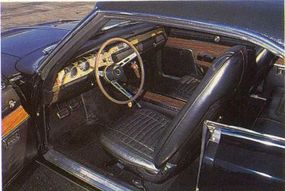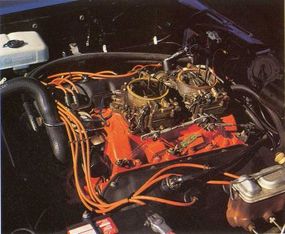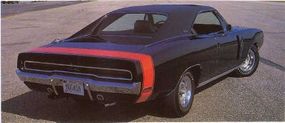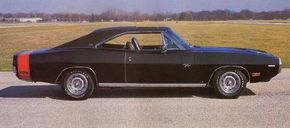Like a veteran heavyweight calling on all his tools to finish strong in the late rounds, the 1970 Dodge Charger R/T Hemi entered the last year of its classic muscle car period with an unprecedented array of tricks.
Advertisement
A new chrome loop front bumper was echoed by a fresh full-width taillamp housing, and R/T versions gained a simulated reverse body-side scoop. The color palette took on a younger look, borrowing high-impact hues like Plum Crazy and Go-Mango from the new Challenger. New front seats were the car's first to qualify as true buckets, and a hip pistol-grip handle now topped the available four-speed's Hurst shifter.

Carried over was the extra-cost SE (Special Edition) group with its leather upholstery. And for the first time, Charger could be optioned with an electric sliding sunroof.
Again standard on the R/T was the 375-bhp 440-cid four-barrel, but for those who didn't wish to shell out another $648 for the 425-bhp 426 Hemi, there was a new choice, the 390-bhp 440 with a trio of Holley two-barrels. It cost and upkeep were friendlier than the Hemi's, torque was identical (at 800 less rpm), and in a street fight, few big cars were tougher than a 440 Six Pack. King Kong itself grew more accommodating with the addition of hydraulic lifters, which were better than solid tappets at maintaining the valve lash so essential for good Hemi performance.

Still, being fast with a Hemi required keeping all four carburetor barrels from opening until the tires hooked up. Not every driver was so skillful. "If you were Hemi hunting in a lesser car, you wanted to catch him at a stop," explained Patrick Bedard in his 1990 Car and Driver "street warriors" retrospective. "If he fumbled and you were lucky enough to pull out a fender-length on him, you claimed victory early by backing off the power, thereby ending the run. If you were crazy enough to stay on it, the Hemi would take over in short order."

No Charger offered a broader array of thrills and frills than the 70. But rising insurance rates and tougher competition caused R/T sales to fall 50 percent, to 10,337, for the model year. With 116 orders, the new Six Pack outsold the Hemi by more than two to one.
Return to Classic Muscle Cars Library.
Advertisement
